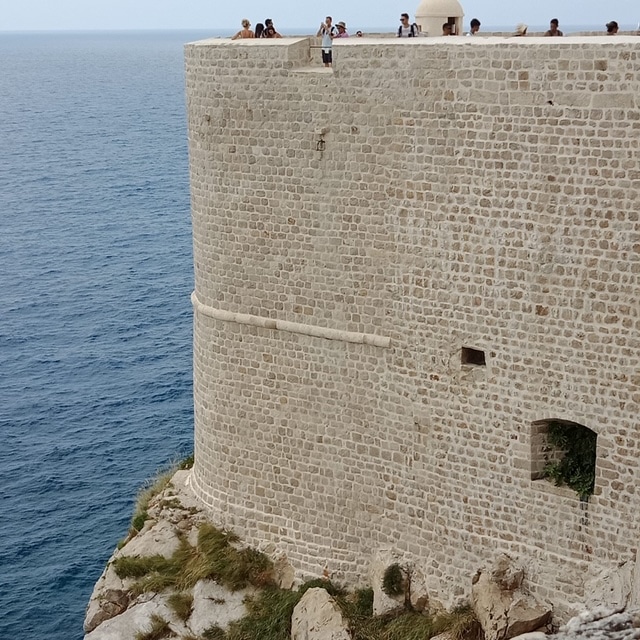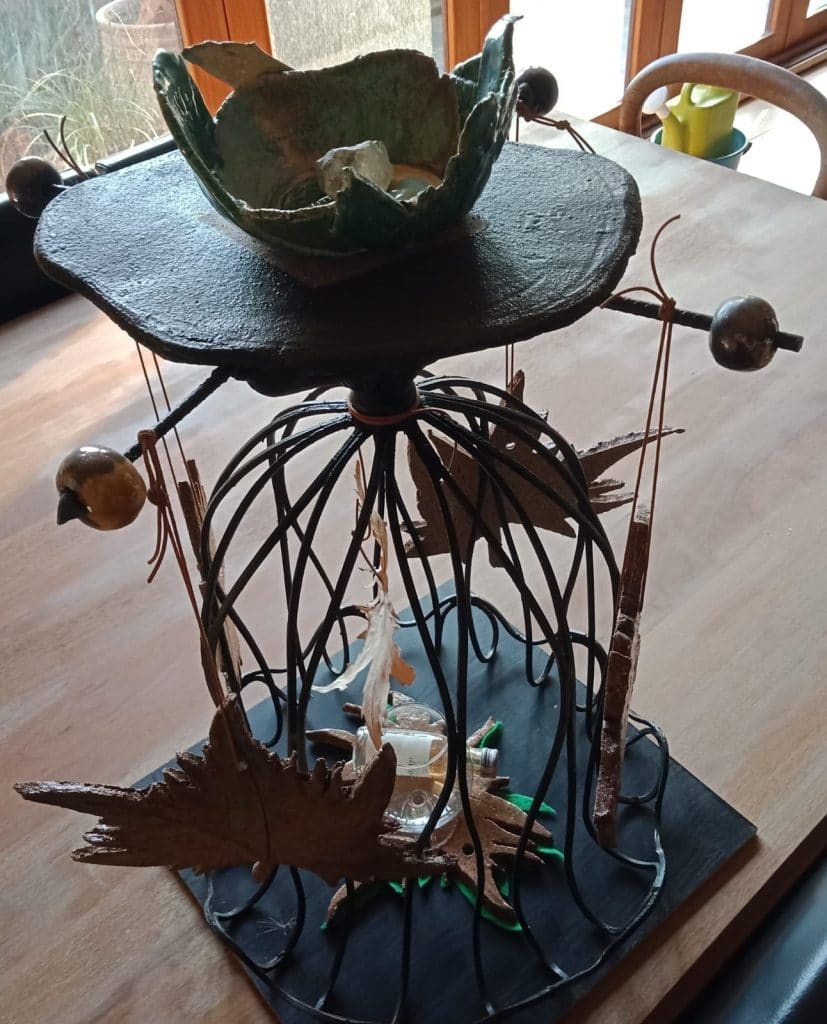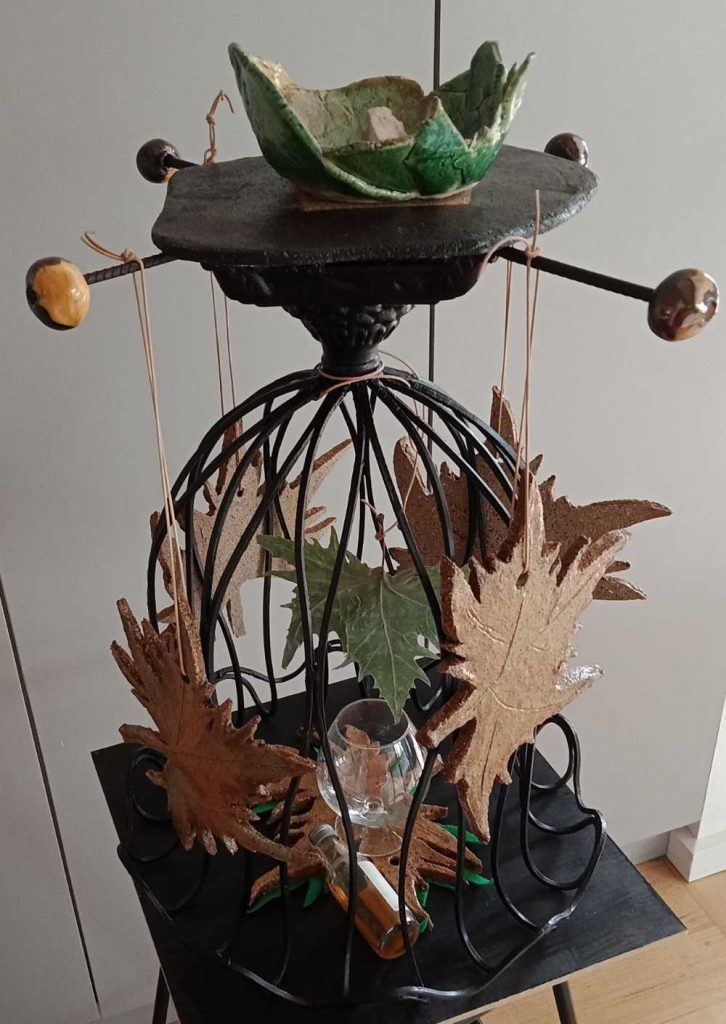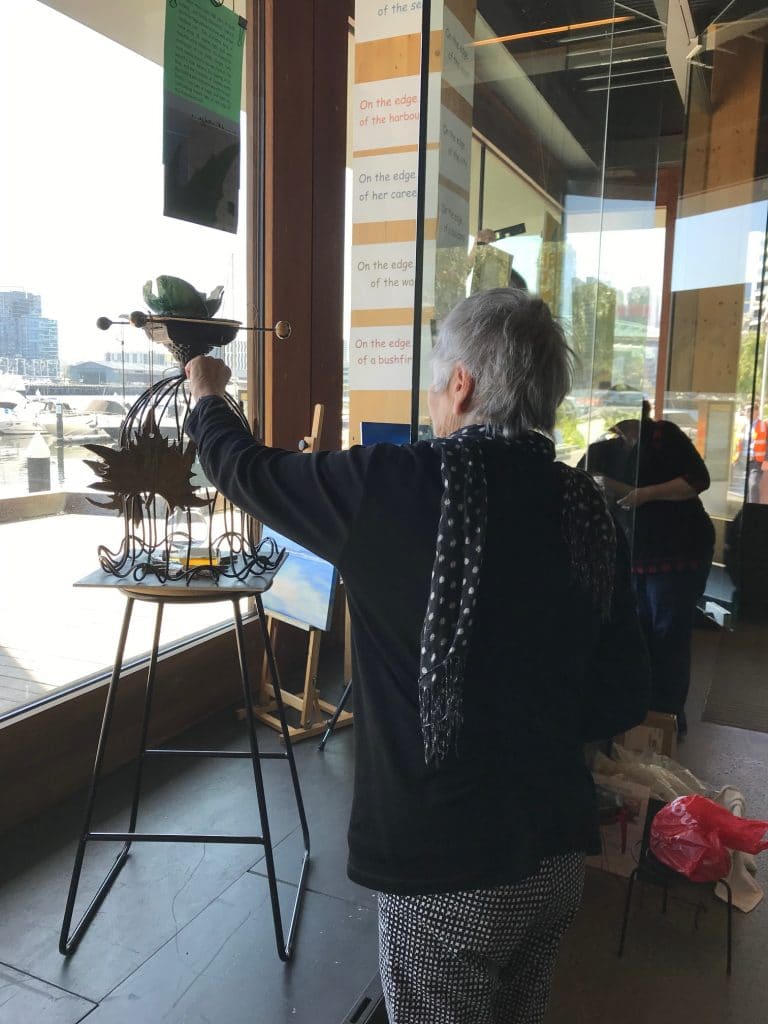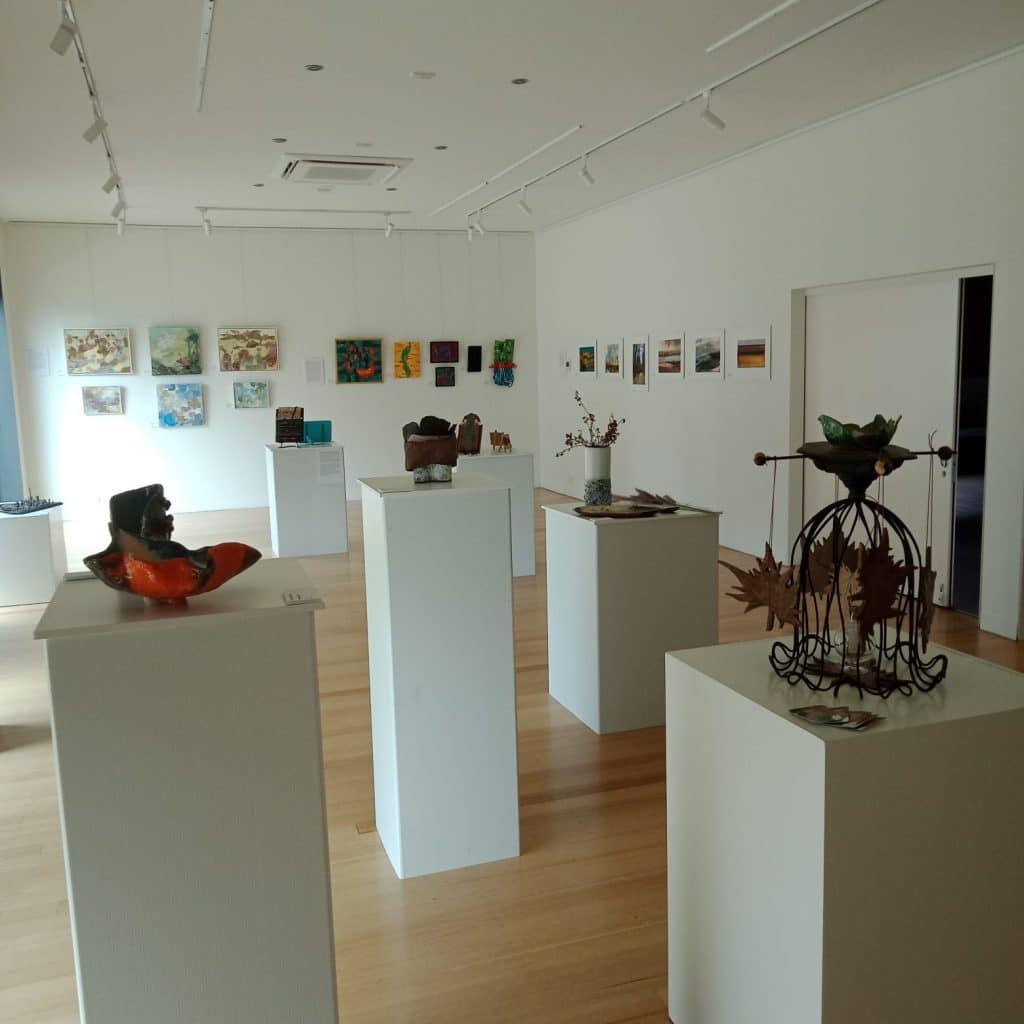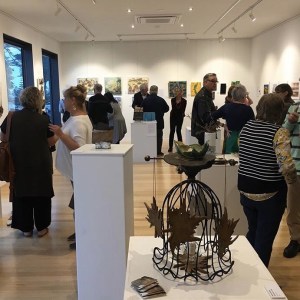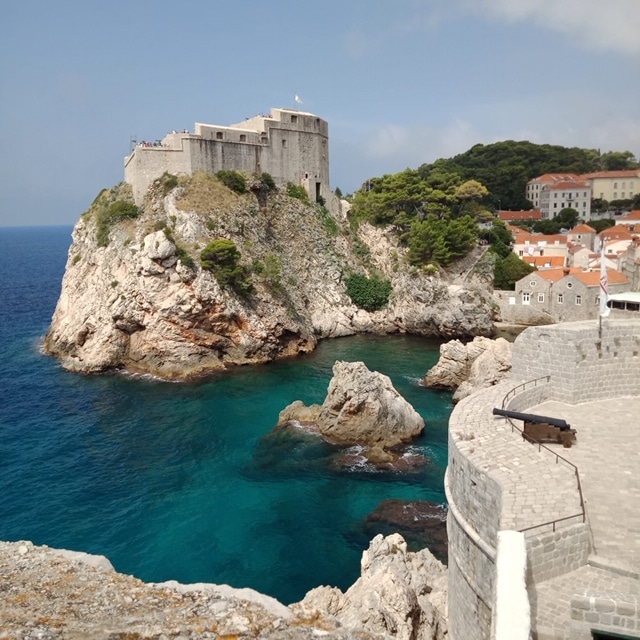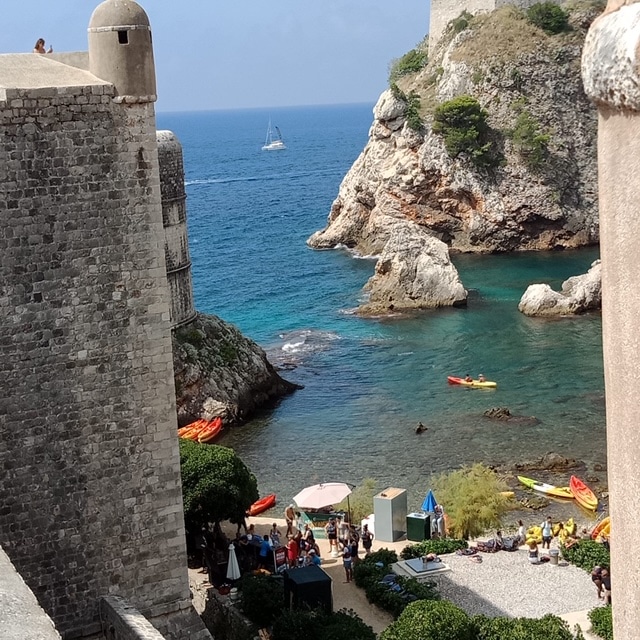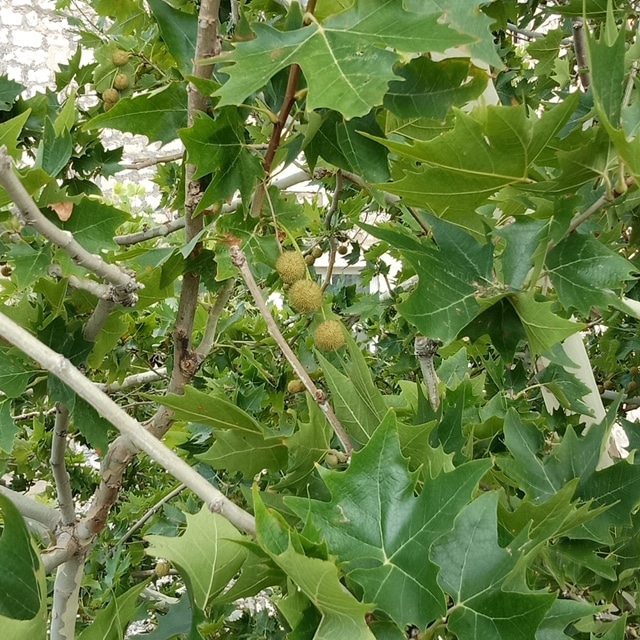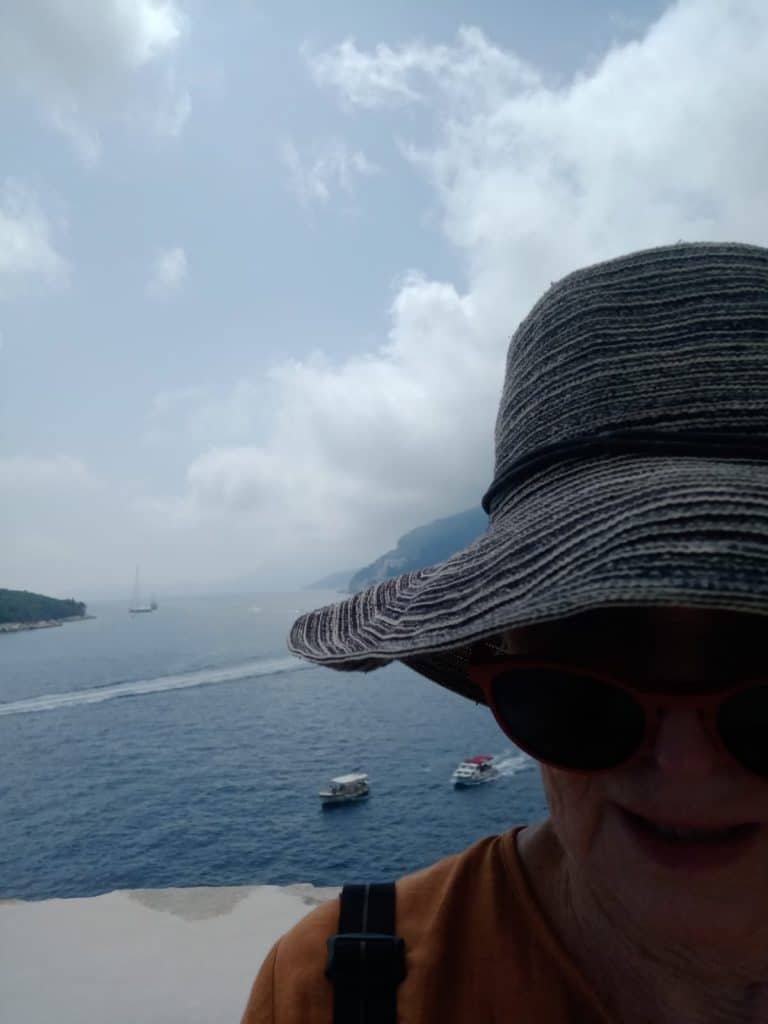Mardie Whitla blogs about her handbuilt ceramics installation Dubrovnik’s Leaf
There’s a story behind the creation of my handbuilt ceramic and found object installation Dubrovnik’s Leaf. It all started with a wall and a leaf.
It took more than 450 years to build, extend and fortify the defensive walls of Dubrovnik, Croatia. The city and its walls are now recognised as a UNESCO World Heritage site. The main wall, two kilometres long and in some areas 25 metres high, is built from white limestone. The beautiful, clear Adriatic Sea laps at its base.
Dubrovnik’s World Heritage Wall
The wall has resisted the earthquake of the 1600s and threats from every nearby country you can think of. It has also stood steadfast despite the hundreds of tourists walking anti-clockwise around the top every day.
A visit to Dubrovnik on a ‘try-out’ cruise
I was travelling on my first cruise ship experience. I had previously considered a cruise unthinkable. There would be too many people, noisy children, drunken corpses, terrible food, etc.
However, I decided on a ‘try-out’ of only one week. Hopping onto a Ponant Cruise boat in Venezia and cruising down the eastern side of the Adriatic, we stopped in Dubrovnik on the Dalmatian Coast for a few nights.
A tempting leaf on an overhanging branch
It was hot as I was walking around the ancient wall. When I arrived at a green, luscious tree with branches overhanging the wall, I stopped and paused. A leaf brushed my face. It was telling me something.
I carefully popped it inside a book in my rucksack, and then completely forgot about it. When I arrived home in Australia a few weeks later, I was unpacking my suitcase and there it was.
One leaf multiplies for an art exhibition
With an exhibition fast approaching in Melbourne, I decided to include my single leaf as the centrepiece of a ceramic work. This one small green leaf became the mother of six others.
To make these leaves, I used Buff Raku Trachyte Feeneys Clay. This clay is great for slabbing. My intention was to get a moderate feel of ‘specks’ when complete.
Each leaf is exactly the same size, using the original Dubrovnik leaf as the model. However, I made the hole in a different position on each one. This was to provide a variety of styles when hanging the leaves.
I used underglazes of tangerine and cayenne red, and for the second firing, Walker’s spruce green. Both coulerents for each leaf are on one side of each leaf only. This provides an interesting view of the original clay before glazing. It also ensures that glazes don’t run and stick to the bottom of the kiln!
As the leaves came out of the kiln, they piqued my creativity. I searched my studio, finding a variety of objects that I could use to assemble an artistic and engaging installation.
At the opening of the exhibition, Dubrovnik’s Leaf was hung as the centrepiece of my ceramic work. I still have this leaf, but it now looks very different, as you can see in the final photo.

